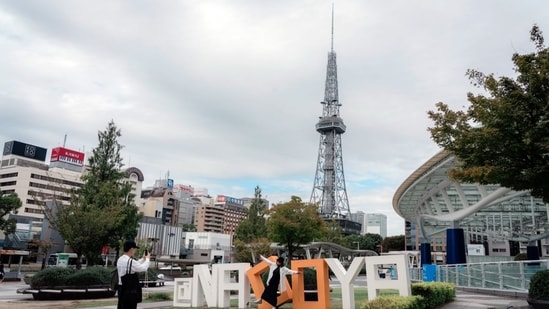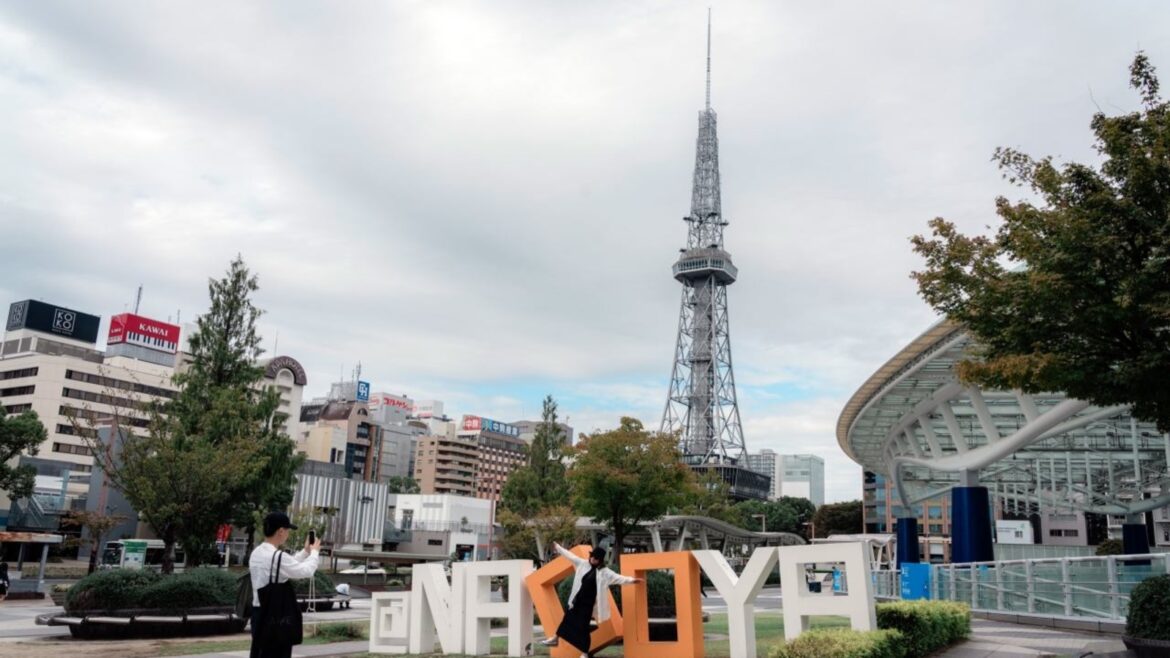NAGOYA, Japan—The tourists who crowd the bullet trains from Tokyo tend not to disembark at Nagoya as they speed along the so-called Golden Route linking the Japanese capital with Kyoto and Osaka.
 PREMIUM Nagoya officials say they’d happily welcome more visitors, though they admit that putting the city out there isn’t something that comes easily to its reserved inhabitants.
PREMIUM Nagoya officials say they’d happily welcome more visitors, though they admit that putting the city out there isn’t something that comes easily to its reserved inhabitants.
“Nagoya tobashi,” the locals say. Nagoya gets skipped. The manufacturing hub, which anchors the region that is home to auto giant Toyota, is Japan’s fourth most-populous city and, according to a decade-old newspaper poll that still stings here, number one in dullness.
Elisabeth Llopis wants to stop the skipping. A resident here for 16 years, she runs a travel website called “Nagoya is not boring,” dedicated to overturning the dreary image of the city she loves and bringing in more tourists.
“I realized that no one came here. Why?” said Llopis, originally from the Spanish island of Mallorca. Nagoya boasts a spectacular castle (rebuilt using concrete after World War II) and a famous shrine that houses a sacred sword. Llopis brings visitors from the U.S., Spain and Australia around the city to sample the food and sake. They visit artisans at work making tie-dye cloth in nearby Arimatsu, a village that has been perfecting the art of dyeing fabrics in intricate patterns for 400 years.
“I’ve never thought for a single day that Nagoya was boring,” Llopis said.
 Tour guide Elisabeth Llopis poses in front of Nagoya Castle.
Tour guide Elisabeth Llopis poses in front of Nagoya Castle.
Japan is thronged with tourists but not every place feels it is getting its fair share. The “overtourism” that irks residents of Venice and Barcelona is also riling locals in Osaka and Kyoto, where kimono-clad visitors clog the streets and temples to secure their snapshots for social media.
It is a different story in Nagoya, where officials say they’d happily welcome more visitors, though they admit that putting the city out there isn’t something that comes easily to its reserved inhabitants.
“As for the temperament of Nagoya people, we tend to be quiet. We are not particularly outgoing. We are not good at promoting ourselves, unlike Osaka people,” said Aritsune Kino, director of tourism promotion at Nagoya’s convention and visitors bureau.
In the nine months through September, almost 32 million people visited Japan, an 18% increase on the same nine-month period last year, according to the Japan National Tourism Organization. That growth puts 2025 on track to surpass 2024’s record 37 million inbound travelers, who collectively spent more than 8 trillion yen, equivalent to about $52 billion.
The world’s top tourist destination is France, which received 102 million visitor arrivals in 2024, who spent some $77 billion, according to the United Nations World Tourism Organization.
Successive Japanese governments have made promoting tourism a priority. The goal is to hit 60 million tourists by 2030. In common with other countries, Japan sees tourism as a valuable source of jobs and growth to complement its industrial prowess, as rising incomes mean more and more of the world’s population is taking to the skies.
But the speed at which tourism is surging is unsettling some in Japan, contributing, analysts say, to the electoral success of upstart political parties such as Sanseito, whose “Japanese First” messages focus on complaints about foreign tourists and immigration.
In a sign of the political sensitivity, Prime Minister Sanae Takaichi during her campaign to win the presidency of the ruling Liberal Democratic Party was critical of tourists who she said were harming the sacred deer in Nara, a city in her home prefecture.
Tourism collapsed during the pandemic but has bounced back rapidly. South Korea sent the most tourists last year, with almost nine million visitors, followed by travelers from China, Taiwan and the U.S., with 2.7 million.
Measured by the number of overnight stays by foreign visitors, Tokyo ranked top, with around 40 million nights spent in the city. Osaka was second and Kyoto, with its narrow streets, geishas and towering temples, was third, with around 12 million. Aichi, the prefecture that includes Nagoya, came in ninth, with three million overnight stays.
On a recent day at Kyoto’s Kiyomizu Temple, Joe Kilgannon and his wife Catherine, who live in County Meath in Ireland, said they found the crowds “a bit overwhelming.” Tourists tend to congregate in a tiny area of the old city.
They said they hadn’t heard of Nagoya, however. Neither had Chicagoans Mike Kocian and his wife Devota, who were also strolling in the temple grounds. “It’s probably a hidden gem,” said Mike, an executive at a manufacturing company.
Residents say Nagoya’s reputation for being dull has an element of truth. It has long been a factory town, meaning people tend to get up early and go to bed early, too, they say. One of the city’s oldest izakaya, a snug Japanese bar serving food and drinks, only recently extended its opening hours past 8 p.m. Fans of historic heavy machinery can visit a railway museum, a museum dedicated to Toyota and even a museum about sewerage systems.
Kazumasa Nishikawa, a Nagoya native who runs a classical Japanese dance school in the city that traces its roots to the 1840s, said Nagoyans love their hometown but even they say it is boring. Being so focused on industry means for a long time “they kind of looked down on tourism,” he said.
The challenge is figuring out how to bring in more people without succumbing to the problems that Japanese people say plague other cities, such as restaurant prices that are too high for locals, congestion on public transport, litter and never-ending crowds.
Kuniyuki Nishi, who manages the Nikko Style Nagoya hotel, said he wants to see more visitors but he is still worried about overtourism, especially as Nagoya is next year scheduled to host the Asian Games, a regional competition similar to the Olympics. He sees the city’s appeal rooted in its central location in Japan and the very fact it isn’t too busy.
At Nagoya’s Atsuta Shrine, Lars Leipner and Kerstin Benning from Germany said they chose to stay in the city because it’s conveniently located to make day trips to Takayama, Shirakawa and other spots on their itinerary. Having visited the principal tourist draws of Tokyo, Kyoto, Osaka and Hiroshima on a previous trip in 2018, this time they wanted to escape the crowds and see another side of Japan.
“We like it when there’s not too many tourists,” said Benning.
City officials have a similar plan to avoid the overtourism trap. They say they want Nagoya to be a base for tourists to explore the surrounding region and beyond, rather than a place they spend all day.
They still need to persuade people to get off the train, though. “That is the biggest issue,” said Kino.
Write to Jason Douglas at jason.douglas@wsj.com and Junko Fukutome at junko.fukutome@wsj.com


AloJapan.com